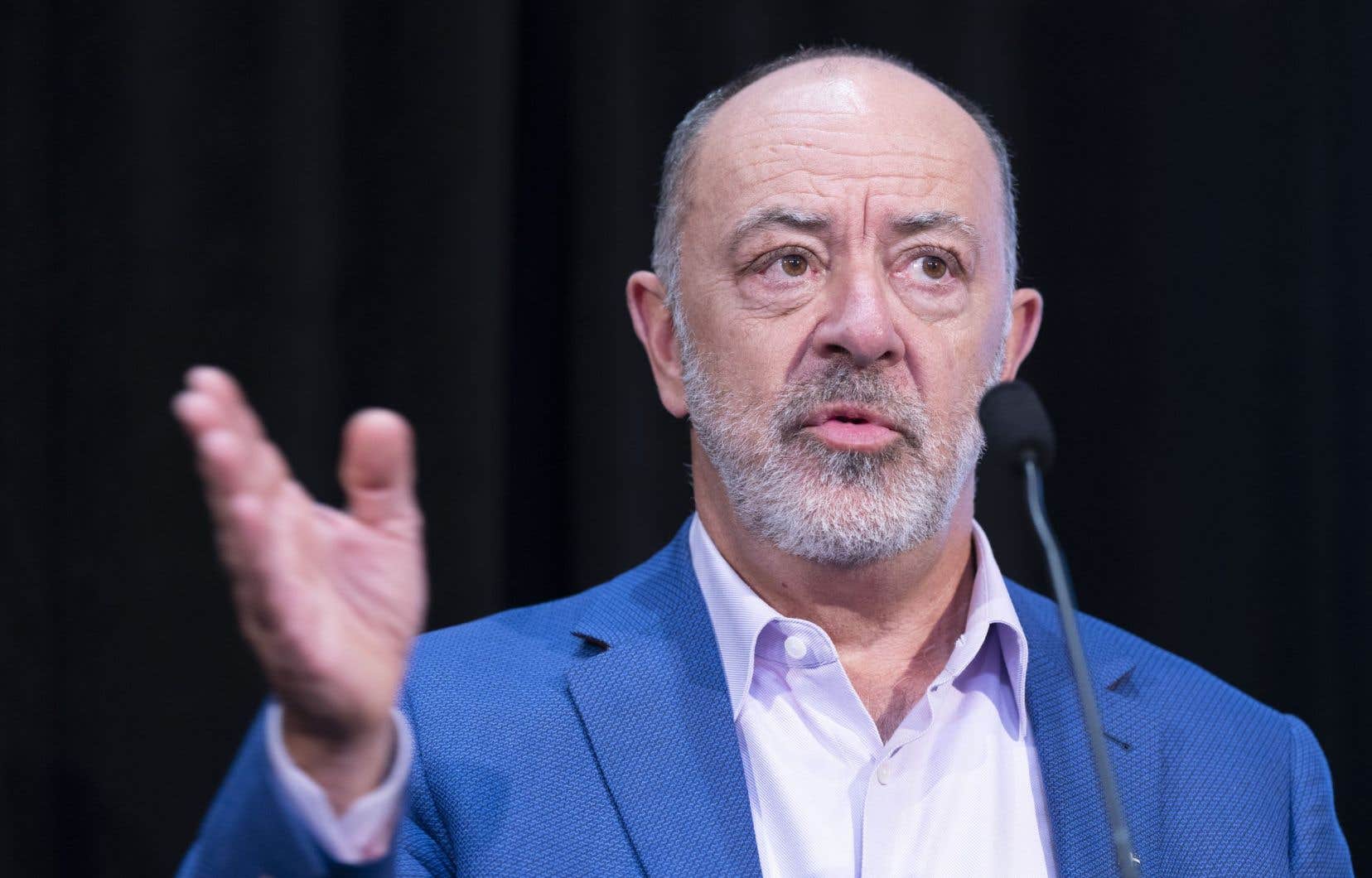After several twists and turns in recent years, the site of the new Outaouais hospital was announced Thursday morning. The Minister of Health, Christian Dubé, confirmed that the hospital will be built on the Asticou site and that there will be another service point in downtown Gatineau.
Several MPs and ministers, from the provincial and federal governments, were present for the announcement. The Minister of Public Services and Procurement, Jean-Yves Duclos, officially announced that the Government of Canada has signed an agreement in principle for the transfer of part of the land and building of the Asticou Center to the government of Quebec with the aim of developing the future Outaouais Affiliated University Hospital Center (CHAU).
The hospital center will have 600 beds and is scheduled to open in 2034. Mr. Dubé, however, remains hopeful of being able to open the hospital in 2032 as was initially planned. “I always said 2032, and I want to respect this deadline. We will keep our objective,” said Mr. Dubé.
The downtown service point will be accessible by public transportation, including the Rapibus, and is expected to be open in 2026. It will be equipped with various “high-volume clinical activities,” including a sampling and vaccination center, certain front-line services and OPTILAB laboratories.
In a press release from the office of the Minister of Health, it is explained that “the project is being modified in order to better correspond to the expectations and needs of the population of the region and to be carried out as quickly as possible for faster commissioning. for the population “.
Technical studies had demonstrated “a significant presence of biogas, possibly unsuitable for the construction of a hospital, a conclusion which could only be obtained after starting construction work, a risk deemed unacceptable by the government”. In addition to this issue, expropriations were more numerous than anticipated and there was difficulty in relocating businesses.
In the summer of 2022, the Coalition Avenir Québec (CAQ) announced that the future CHAU de l’Outaouais would be built along rue d’Edmonton, in the Hull sector. But subsequently the government backed down on its choice.
“Exactly two years ago, I was here with colleagues to announce the site. Two years later, we made an ad for the same hospital, but on another site. What happened ? What happened is that during the last two years we unfortunately had several surprises on the site and I think you have to be very transparent when you work with billions of dollars and when you work with installations that will last 50, 75, 100 years,” declared Mr. Dubé at a press briefing in Gatineau.
“If at any given moment we realize that we are not making a good decision, we must not be afraid to take a step back. And that’s what happened, we had to reconsider the site. »
Civil groups denounce the site
In a press release, the Coalition for an accessible and sustainable hospital center in Outaouais (CCHADO) as well as the Quebec Association of Physicians for the Environment (AQME) said they doubted the capacity to carry out the project on the designated site.
Both groups highlight what they consider major issues related to location and believe that this will lead the government to change sites again. They note that the location is surrounded by Gatineau Park, which raises accessibility issues.
The minister responsible for the Outaouais region, Mathieu Lacombe, does not consider the park as an issue. “The proximity of Gatineau Park should not be seen as a disadvantage, on the contrary, […] proximity to nature also ensures that the conditions for recovery […] are optimal for patients,” he said. Mr. Lacombe recalled that by expanding it, the park would be better protected.
CCHADO and AQME also argued that remote location could have an impact on the attractiveness and retention of the workforce. There could also be issues with access to ambulances, according to them, and they point out that there are no hotels or other amenities in the area to accommodate visitors.
The organization Vivre en ville also deplores the choice of the site chosen. “The future hospital must be built on a more accessible site, close to other services, and well served by public transport. It is above all a question of equity for the populations served. It is also a fundamental issue for the economic vitality of Gatineau,” declared Christian Savard, general director of Vivre en ville, in a press release.
According to Minister Lacombe, the decision for the Asticou site is not unanimous, but there is consensus among the population of the region. “Coming up with a project like this and achieving unanimity is like dreaming in color. What we have to do is work well, manage to create a consensus where there is a majority of people who agree, and I think that in this case that is what we achieve. TO DO. So be careful before saying that people don’t agree,” Mr. Lacombe responded to a journalist’s question when he had just listed several groups that support them.
The Asticou Center site has a total area of 26 hectares. Of this number, 17.2 hectares should be transferred to the government of Quebec by December 2025, indicates Public Services and Procurement Canada in a press release. Subject to approvals, the remaining 8.9 hectares would be transferred to the National Capital Commission (NCC) for renaturalization purposes.
—
The Canadian Press’ health content receives funding through a partnership with the Canadian Medical Association. The Canadian Press is solely responsible for editorial choices.
